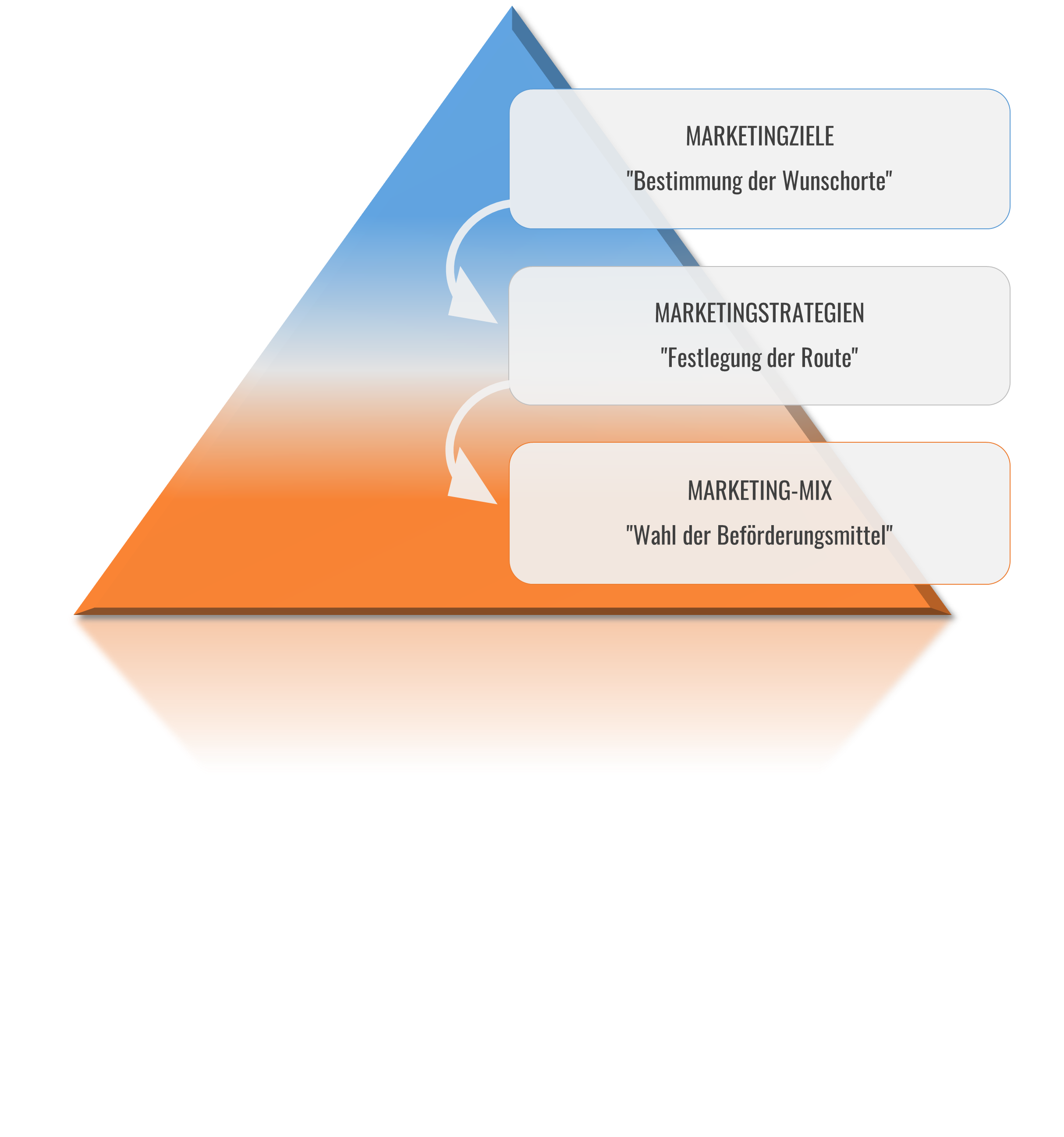MARKETING CONCEPT
The three conceptual levels of marketing objectives, marketing strategies and the marketing mix are decisive for marketing as an approach to thinking and acting and realizing themselves in interaction to form a coherent marketing concept. It is a kind of roadmap, which is determined by the desired location, route and means of transport.

The marketing goals are area goals of the company goals and must be systematically derived from these to determine the desired locations.
For a complete target system of a company, the following target levels must be the basis:
Company principles are general value concepts, so-called Basic Beliefs, which are defined by the company. Values, behaviors and guiding principles are dictated to create such corporate principles.
The company purpose includes the vision and mission of the company. The vision defines the basic direction that the company is pursuing. The guiding principles set out in it describe the system of values to which the company will orient itself in the future. The mission serves as the basic business orientation for the following years. It should conform to the company's purpose and focus on the company's core business. In addition, the vision and mission can be extended by the corporate social responsibility. Beyond the legal requirements, resolutions regarding the targeted sustainability of the company are defined there. Furthermore, the Code of Conduct is also laid down in the target system. It contains authoritative rules of conduct for the company's employees.
Company goals are superordinate to the divisional objectives and thus to the marketing objectives. They contain the most important factors for the success of the company. In profit-oriented companies, these are data such as sales, profit or competitiveness. The goals are to be formulated in three dimensions: Content (brand X), extent (increase by X%) and time (by year X). When planning and setting goals, a decision must be made between two options:
One variant is bottom-up planning. It takes place from the bottom up. First, the marketing goals of the individual areas are set up, and then the corporate goals are derived from them. The alternative variant is the top-down planning model. It takes place from top to bottom. In this case, the divisional goals are derived from the corporate goals in a meaningful way.
The marketing goals are part of the range goals. Further range goals can be, procurement goals, production goals and financing goals. The marketing goals are to be distinguished in two different goal directions.
There are the psychological goals, like image, customer satisfaction, brand loyalty and the awareness. These goals are very important because they contribute to the realization of the success of economic goals. These economic goals, deal with key figures, such as sales, turnover, profitability, market share and degree of distribution.
For the realization of the marketing goals, there is another subordinate level, the instrumental goals. These include the objectives of the marketing mix, consisting of distribution, product, communication and contracting.
Article written by: LTM - 01.09.22
Copyright © 2024 AKI–Kommunikation e.K. | Webdesign MediaUp